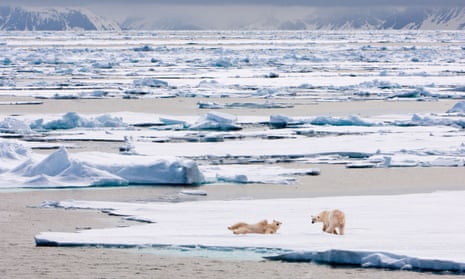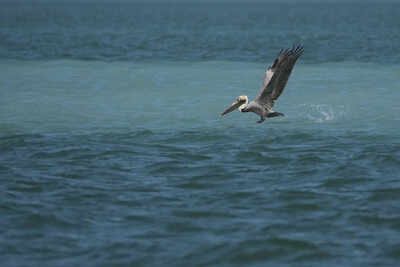National Geographic's New Docuseries Reveals Secrets of Penguins

When one thinks about mysterious creatures in the animal kingdom, penguins might not immediately come to mind. These adorable and playful birds are celebrated in numerous films and television shows, whether they are fictional or documentary-style. They are also a familiar presence in zoos and aquariums around the world. However, recent revelations from National Geographic's fascinating new docuseries, Secrets of the Penguins, suggest that there is still much to learn about these incredible creatures.
In a Zoom interview, wildlife cinematographer and National Geographic Explorer Bertie Gregory shared, "As soon as we started filming, we began to witness behaviors that had never before been documented on camera. Before embarking on this project, I believed I was well-versed in penguin behavior, but I was certainly mistaken." This thrilling three-episode series provides an unparalleled look into the lives of various penguin species as they navigate the challenges of survival on a planet that is changing at an alarming rate.
The audience is taken on a captivating journey as we witness penguins braving fierce Antarctic storms, trekking across arid deserts, and even wandering through the bustling streets of Cape Town. In a groundbreaking moment captured on film, hopeful penguin parents demonstrate the delicate practice of transferring their egg between them using a ball of icea behavior previously unseen. Additionally, Galapagos penguins exhibit resourceful behavior by stealing fish right from the beaks of pelicans, enhancing their hunting efficiency. This extraordinary documentary involved the dedicated efforts of over 70 scientists and filmmakers who traveled the globe for two years to capture these rare and breathtaking moments.
James Cameron, the esteemed director known for blockbuster hits like Titanic and Avatar, serves as the executive producer of Secrets of the Penguins. He remarked, "What comes back from the field teams is often astonishing and scientifically significant, leading to discoveries like 'We have never seen that before.'" This highlights the importance of the series not only as an entertainment piece but also as a crucial scientific resource.
The docuseries, narrated by actress Blake Lively, is set to premiere on April 20 at 8 p.m. ET (5 p.m. PT) on National Geographic, with streaming availability on Disney Plus and Hulu beginning April 21, right before Earth Day.
One particularly striking scene features hundreds of emperor penguin chicks congregating on an Antarctic cliff, located 50 feet above the ocean. Gregory was astonished as he wondered aloud, "What on earth is going on here? I've only ever observed emperor penguins jumping from the sea ice, which might be a couple of feet at most. Surely they can't be contemplating a leap from that height!" Yet, to everyones amazement, one daring penguin takes the plunge and lands safely in the frigid waters below, prompting hesitant fellow chicks to follow. This remarkable moment, captured by a drone, turned into a viral sensation when it was shared as a teaser last year.
"You couldn't script a more thrilling conclusion for the opening episode," Gregory exclaimed. "This unique behavior was so extraordinary to witness; it was an emotional roller coaster!"
To successfully capture such rare wildlife behaviors, Gregory emphasizes the importance of time spent in the field. He explained, "Having ample time with the animals allows you to observe things that few have seen before, and enables breathtaking filming. Normally, wildlife shoots span about four to six weeks, but the first episode alone took an astonishing 274 days to film. Overall, our team filmed over a two-year period to gather enough footage for the three episodes of this documentary.
Drone technology played a pivotal role in the filming process. With advancements in flight duration and powerful zoom lenses, the team was able to document rare moments from a safe distance. Gregory elaborated, I was able to hover in the air for hours, constantly changing batteries to ensure I could capture that pivotal moment when the chicks began to leap. Without drones, capturing such unique behaviors would have been impossible.
Prior to venturing into the icy realms of Antarctica, the team rigorously tested their camera equipment in freezers to assess their resilience against harsh temperatures. They also created durable cables that could withstand the extreme conditions of the natural world.
Cameron added, Natural history photography pushes the boundaries of art and technology. Were not shooting in a comfortable studio; were working in some of the planet's most hostile environments. This was particularly relevant to Cameron, who has previously executive produced other National Geographic projects such as Secrets of the Whales and Secrets of the Elephants, as well as several underwater documentaries.
Throughout Secrets of the Penguins, a significant theme emerges: climate change. Viewers witness chicks navigating fragile sea ice that could potentially drag them under before they are ready to swim, as well as others searching for suitable living conditions in a rapidly changing landscape. Cameron remarked, You cannot study penguins without encountering the issue of climate change. While we mention it in passing, our primary aim is to inspire a new generation of viewers to appreciate and cherish nature.
Gregory emphasizes the urgent need to address environmental changes, as conveyed in the closing moments of the docuseries. He stated, Penguins are remarkably tough, resilient, and adaptable creatures, yet they exist on the razor's edge of survival. Our actions are pushing them closer to the brink. Protecting penguins is not just about their charm and appeal; they serve as vital indicators of the health of our planet. Our fate is intricately linked to theirs, and a healthy planet is essential not only for penguins but for humanity as well.
See also: The Titanic Gets Digitally Cloned in This New National Geographic Documentary

























